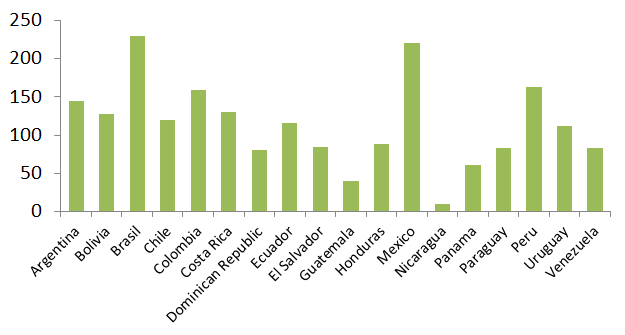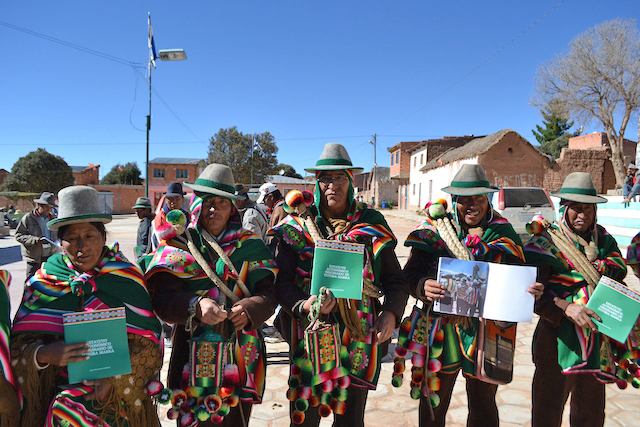Notícias
January News
What's new @LATINNO (in 2017)?
Yes, we’ve crossed the 2000 cases mark!!!
Database Progress

Bolivia’s first Autonomous Indigenous Government: strengthening intercultural democracy

In January, 2017, the predominantly indigenous (Guarani) province of Charagua Iyambae became Bolivia’s first example of an Autonomous Indigenous Government, after a seven-year transition process. The Bolivian Constitution grants autonomy to indigenous municipalities, states and territories – which implies direct elections of authorities, autonomous resource management, as well as legislative, statuary, fiscal and executive administration - when the majority of the population of a territorial unit agrees to adopt this political status, after a series of deliberation processes and referendums.
The process in Charagua was highly participatory in all of its stages. It began with a referendum in December 2009 that decided in favor of converting the municipality into an indigenous people. During the following year, an autonomous assembly formed by residents of the different communities of the province was installed to discuss and elaborate the draft autonomy statute according to their own norms and values. In September 2015, 53% of the population approved the statute in a referendum. Finally, elections were held to select the territory’s leaders and on January 8th, 2017, they took office. Two other territories, Uru chipaya (Oruro) and Raqaypampa (Cochabamba), may also follow, as they are taking the final steps to reaching territorial autonomy - which means that by the end of 2017, Bolivia may have three Autonomous Indigenous Governments.
The implementation of the first Autonomous Indigenous Government has been recognized as a historic milestone for Bolivia. The spokesperson for the Bolivian Supreme Electoral Tribunal (TSE), José Luis Exeni, said that the existence of the first indigenous self-government of Bolivia proves three things: that the constitutional principle of autonomy is possible; that a Plurinational State is possible; and that an intercultural democracy is possible. The High Commissioner for Human Rights of Bolivia declared that the exercise of indigenous autonomy represents a milestone in effectively fulfilling the rights of indigenous peoples and strengthening the democratic and plurinational character of Bolivia.
LATINNO in The Governance Report 2017
The Hertie School of Governance’s The Governance Report 2017 will feature a chapter based on findings from the LATINNO database. The report, which will be published on April 17th, focuses on “policies, programs, and initiatives meant to address the causes of the current democratic malaise, to foster democratic resilience, and to stimulate the (re-)consolidation and development of democratic regimes.”
In the chapter written by LATINNO Coordinator Thamy Pogrebinschi, entitled "Democratic Innovations: Lessons from Outside the OECD", she explains the context in which democratic innovations have evolved in Latin America, claiming some reasons why they have been deemed more successful in the region in comparison to the western world. Using LATINNO data for 14 countries, she argues that some specific institutional design features make innovations more institutionalized in Latin America than they tend to be in Europe or North America, and how this may play an important role in the effectiveness of such initiatives. In conclusion, she lays out a series of recommendations for institutional designers and policy-makers in the West based on the Latin American experimentation with innovations.
If you'd like to know more, keep an eye out for the forthcoming publication, which you will be able to access here.
